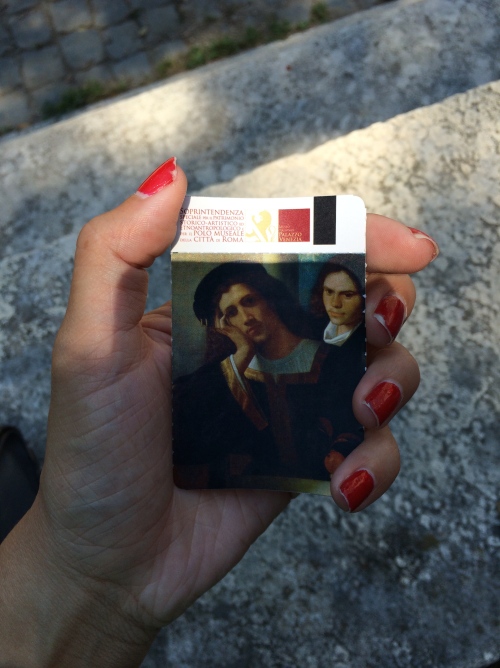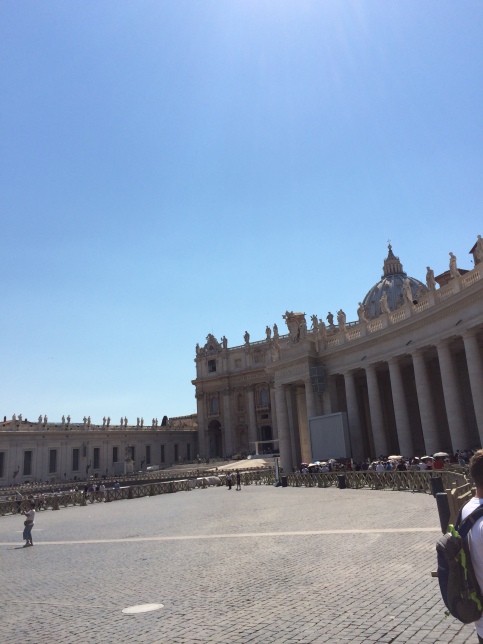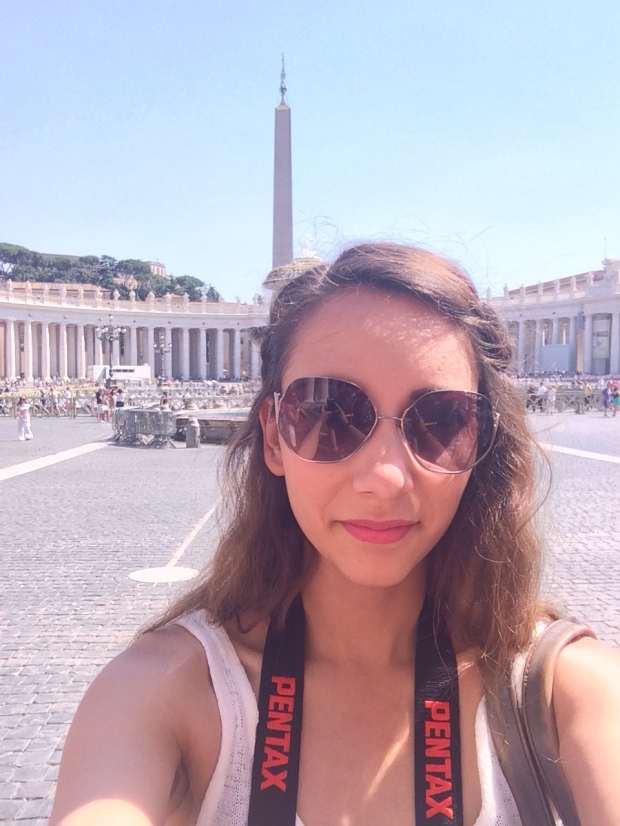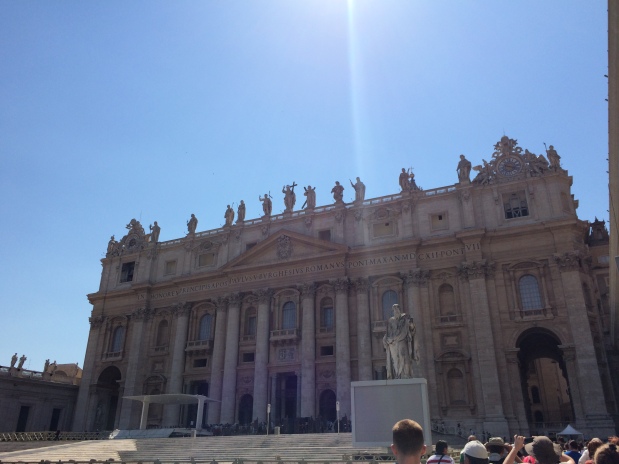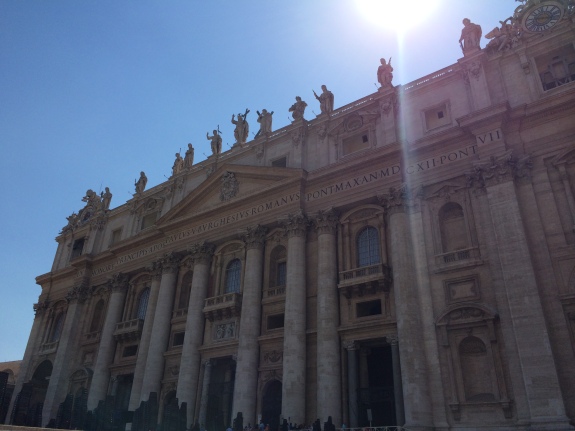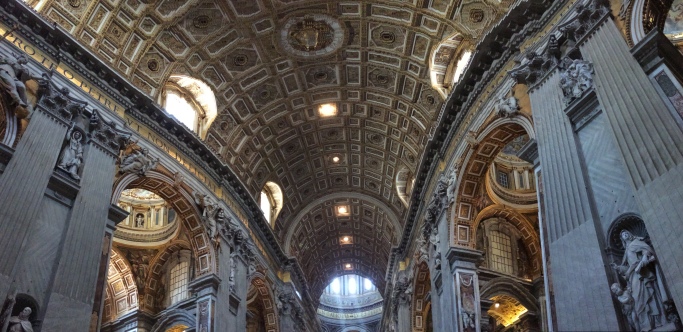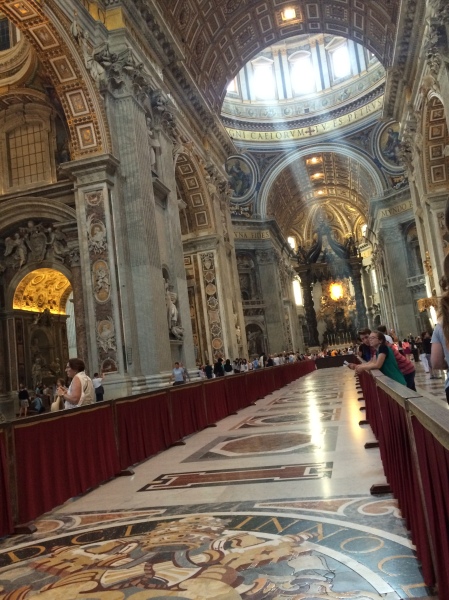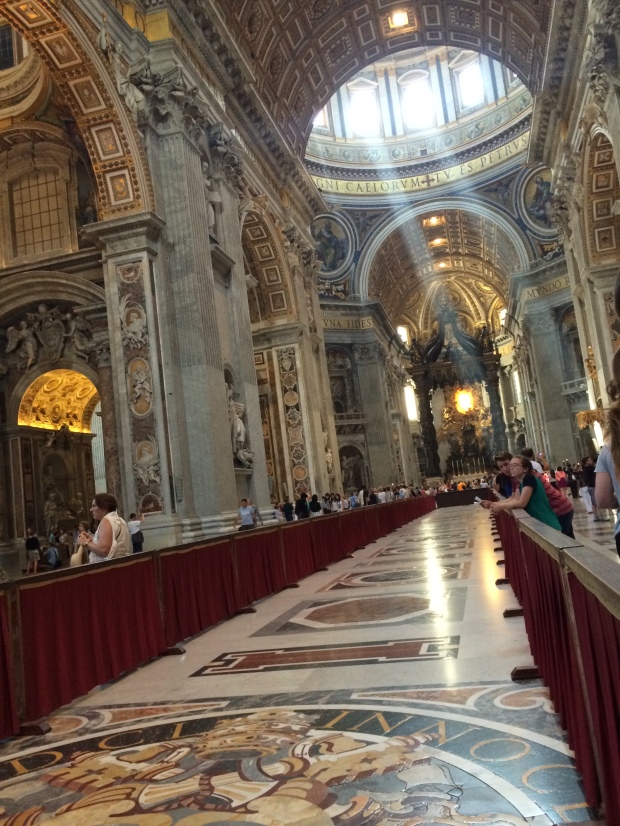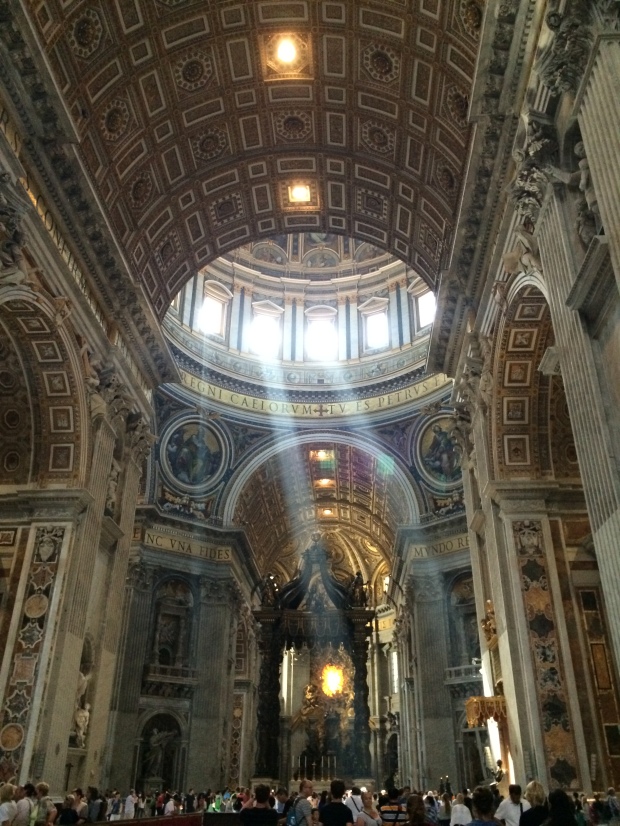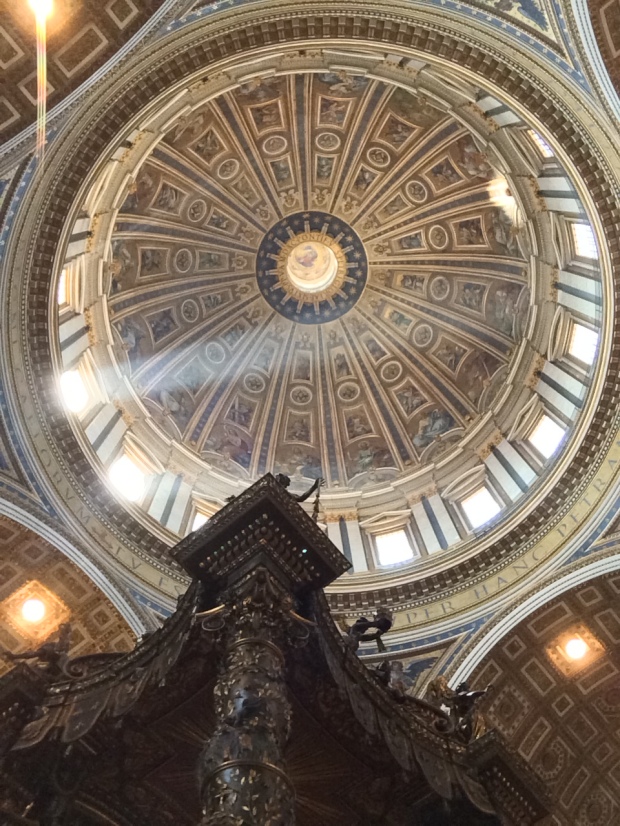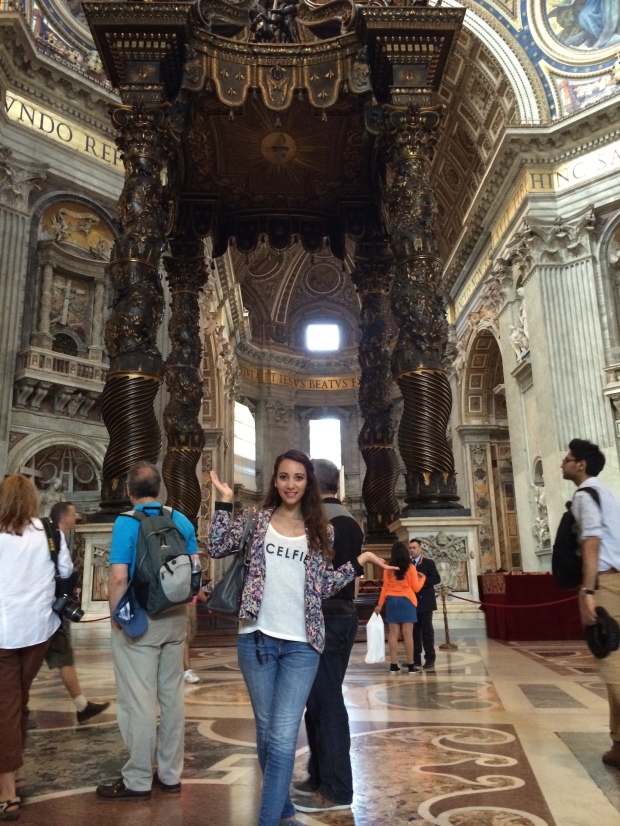The thing I love most about Rome is that it’s full of history and art. On every sidewalk on every block, there is something from ancient or medieval times. Romans do not destroy buildings in order to construct a modern piece of architecture, like a lot of America does. Instead, they build on, fix things, and add another layer of history.
There is a reason why our Study Abroad class was named “Layers of Rome”. We peeled back and exposed different layers of Rome’s history on a daily basis. Even on an hourly basis. We walked through museums, ruins, and piazza’s that contained an immense amount of history from different time periods.
The Roman Forum was on of the sites that I had learned bits of information on throughout high school and college. Standing in the middle of the forum, however, was not the same. Taking a huge leap into the past, we explored the forum that was walked by the likes of Cicero and Julius Caesar. The thing about studying abroad though, was that we still had assignments and work to do. A united groan was heard throughout all of us when we learned that we’d be having to do a scavenger hunt worksheet while we were there. A worksheet? While we’re standing in such a historical place in Rome?
There were a couple of structures that I had studied and learned about when I was studying architecture during my first year of college, and I don’t think I would have recognized them as ruins in this plaza had I not had the map provided to us. A few things were listed that I was particularly excited to see: the Arch of Septimius Severus, Arch of Titus, and the Temple of Romulus.
It was hot, there were creative sweat patterns being made on our clothes, and it was, of course, crowded. We walked down the Sacra Via, the Sacred Road, and stopped behind the Temple of Vesta and started our class presentations. We were all given a topic to present on while we were there, and whenever our topic had to do with something that we were visiting that day, we would go ahead and present. We sat on broken columns and ruins without even thinking about it until a lady yelled at us in Italian to get our feet off of them. We were sitting on ancient columns! Like nothing. I can’t even wrap my head around it.
So much detail was put into every building and every arch the Romans contracted. It makes me wish that the same was still done today (here in El Paso and everywhere). Attention to detail and being proud of what can be accomplished and created, no matter how long it takes to achieve it, is something we should still value in architecture today. We should take that lesson from the Romans.
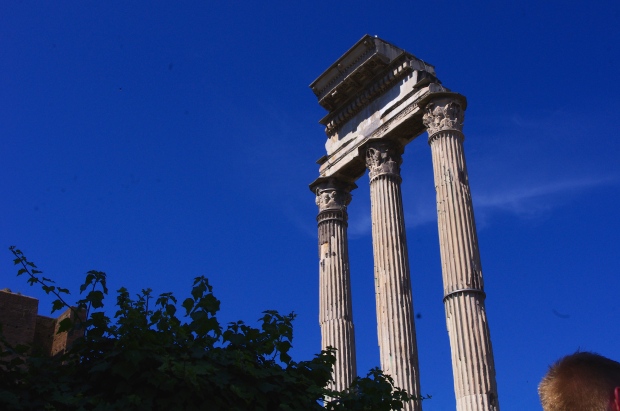
The Temple of Castor and Pollux – close up
The Temple of Castor and Pollux – with just three columns standing, it’s hard to image what it looked like as a whole. 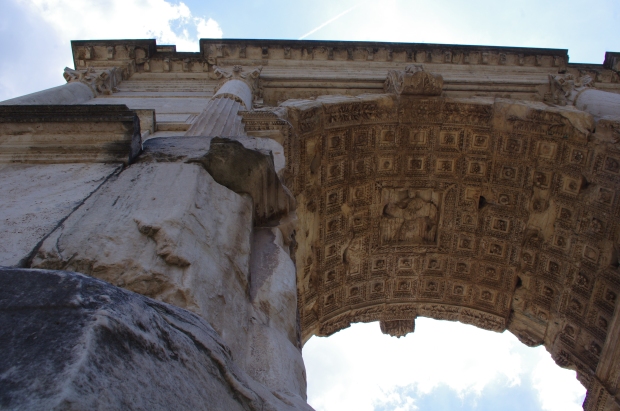
The Arch of Titus 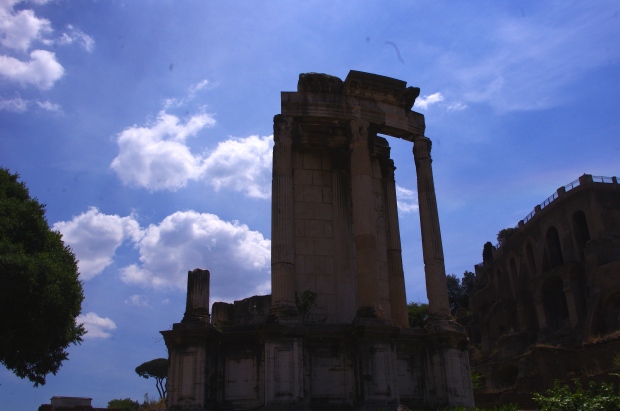
The Temple of Vesta
The Keats and Shelley museum is another one of those structures that holds layers of Rome. Bus 75 took me and my classmates near the Spanish Steps and the museum. The cobblestone, being walked on by tourists and natives alike, led us to the museum, surrounded now by a perfume shop and other retail stores.
Walking around this tiny apartment (still bigger than mine, though) it was hard to image famous poets living here, one suffering from Tuberculoses, and sharing the space with their landlady and daughter. A prime real estate location right now, I wonder how it looked when Keats and his best friend, Joseph Severn, were living there. The only thing I can relate it to is “On the Road” by John Kerouac. It was the Beat generation before the Beat generation.
A very brief history:
John Keats moved to Rome in the early 1800’s hoping that it would improve his health (Tuberculoses). Though Shelley never lived there, his name is also included in the museum because he came during the Grand Tour and also died in Italy. Both writers have pieces inspired by Rome.

This is the layout of the “house”. I use that term loosely since it was more of a small apartment area that the John Keats and Joseph Severn shared with the land lady.
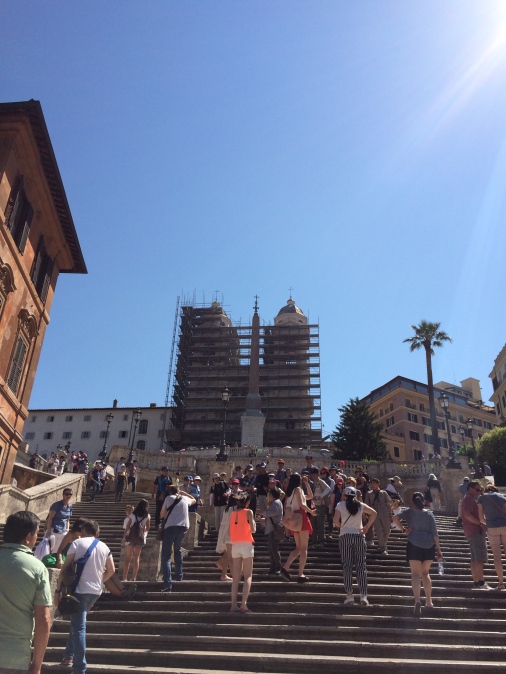
The Spanish Steps.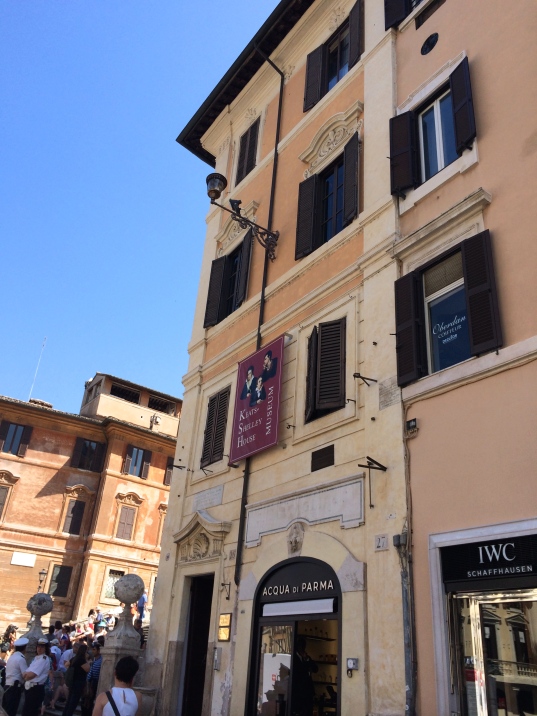
The entrance to the museum. 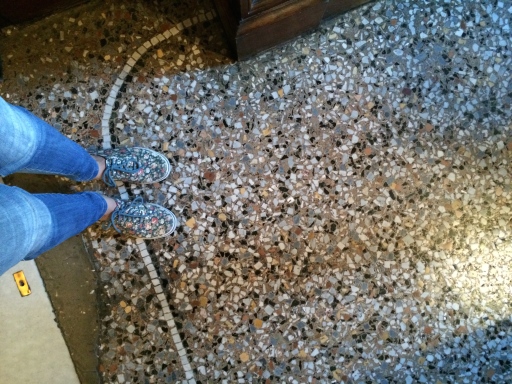
This was the original floor of the building, so yes, this is what Keats walked on as well.
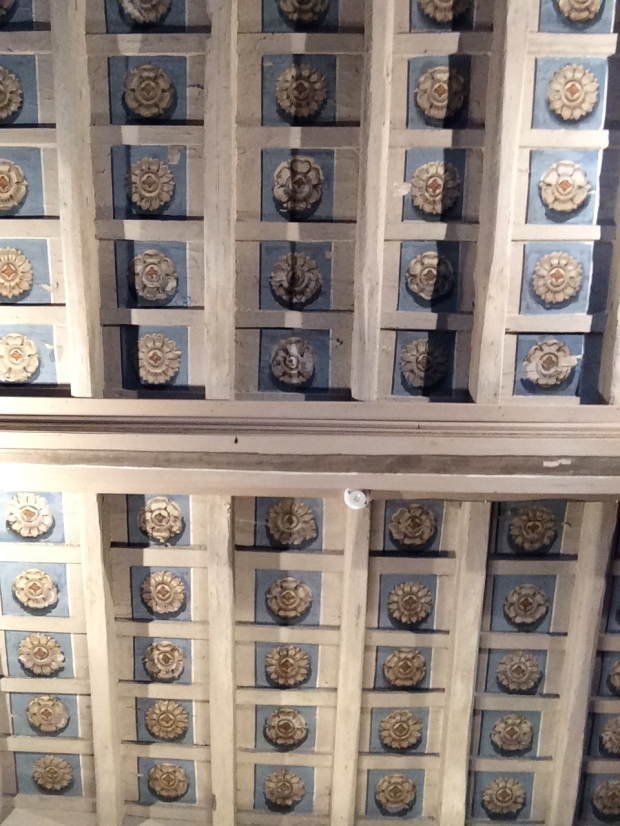
The ceiling of the apartment. Also original, also stared at by Keats.


This is a bust of John Keats with really good hair.
After our trip to the museum we headed to the Protestant Cemetery so that we could see where Keats and Shelley are buried. It’s located right behind the pyramid of Cestius, and if you blink you would totally miss it (I felt like this was a theme with Rome). Amongst all the traffic and craziness of the city, the cemetery is a beautiful and peaceful escape- which is good for the people buried there. Once you walk into the cemetery it’s easy to forget that there is a busy city right outside.
Upon Keats’ wishes, his gravestone does not say his name on it. Instead it says, “Here lies one whose Name was writ in water”. The irony brought to attention by one of the professors: He understood that everything would disappear at some point, like writing something in the water, but yet he left a legacy behind in his writing- which is why he is so important and why so many writers and scholars study him still today. The whole concept was just really awesome and this past semester I actually had one of my writing professors ask us, “What would you want written on your grave?” And that is what Keats chose.
Keats’ gravestone.
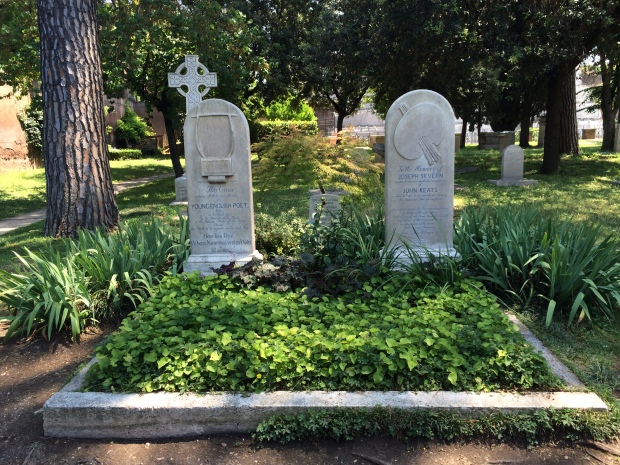
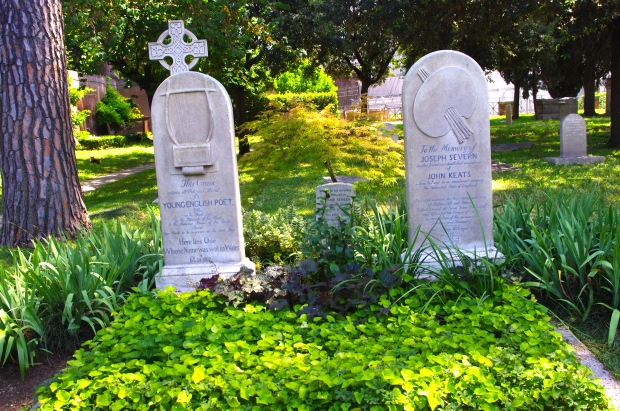
His best friend and old roommate, Joseph Severn, is buried next to him. Severn got to live a full life and didn’t die until he was in his 80s- which is good news.
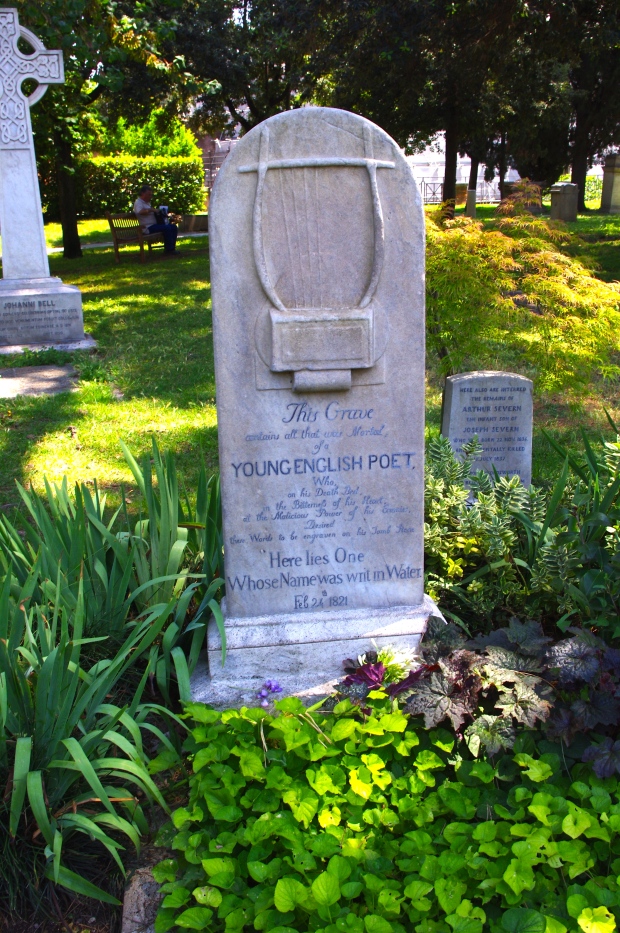
A close up of just Keats’ grave.
The Grand Tour brought a lot of well-off Americans (and other people) to Rome. It became like a rite of passage to study the arts and see different pieces of antiquity. Rome inspired writers, poets, and artists to create different works of art and most stayed and died in Rome.
No matter what your age, I encourage you to explore Rome. Peel back the different layers and expose yourself to the different times locked inside of the city.
Buona sera!
Krysta



